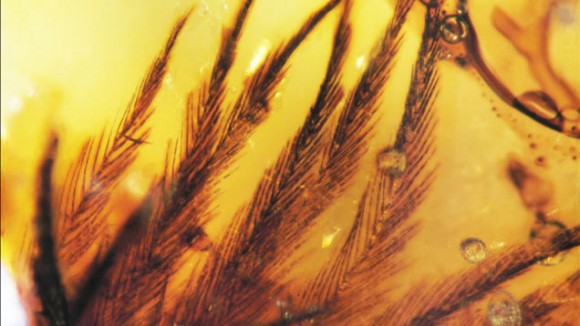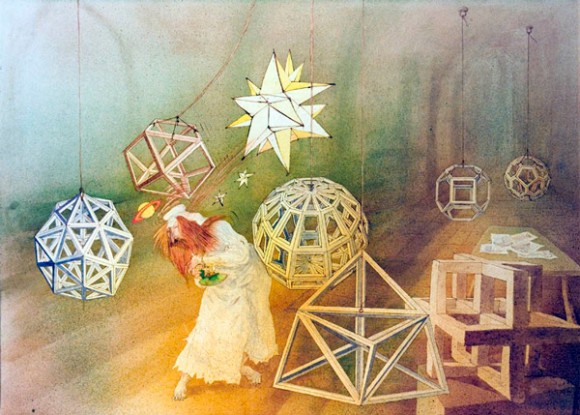Dinosaur feathers encased in amber…
Isn’t it interesting how our vision of dinosaurs has changed over the decades? From big dull-green lizards, to colorful bird-like show offs.
…And amber, oh how we love amber —
Dinosaur Feathers Discovered in Canadian Amber
by AnnaleeNewitz (io9.com)
“[Today] a group of paleontologists announced the results of an extensive study of several well-preserved dinosaur feathers encased in amber. Their work, which included samples from many stages in the evolution of feathers, bolstered the findings of other scientists who’ve suggested that dinosaurs (winged and otherwise) had multicolored and transparent feathers of the sort you might see on birds today. The researchers also presented evidence, based on the feathers’ pigmentation and structures, that today’s bird feathers could have evolved from dinosaur feathers.
We’ve got a gallery of these intriguing feathers preserved in amber.
In a profile of lead researcher Ryan McKellar, The Atlantic’s Hans Villarica writes:
These specimens represent distinct stages of feather evolution, from early-stage, single filament protofeathers to much more complex structures associated with modern diving birds . . . They can’t determine which feathers belonged to birds or dinosaurs yet, but they did observe filament structures that are similar to those seen in other non-avian dinosaur fossils.
Villarica also did io9 readers a favor and asked McKellar whether this discovery could lead to a Jurassic Park scenario. McKellar said…”
For the rest, click here.
Share



